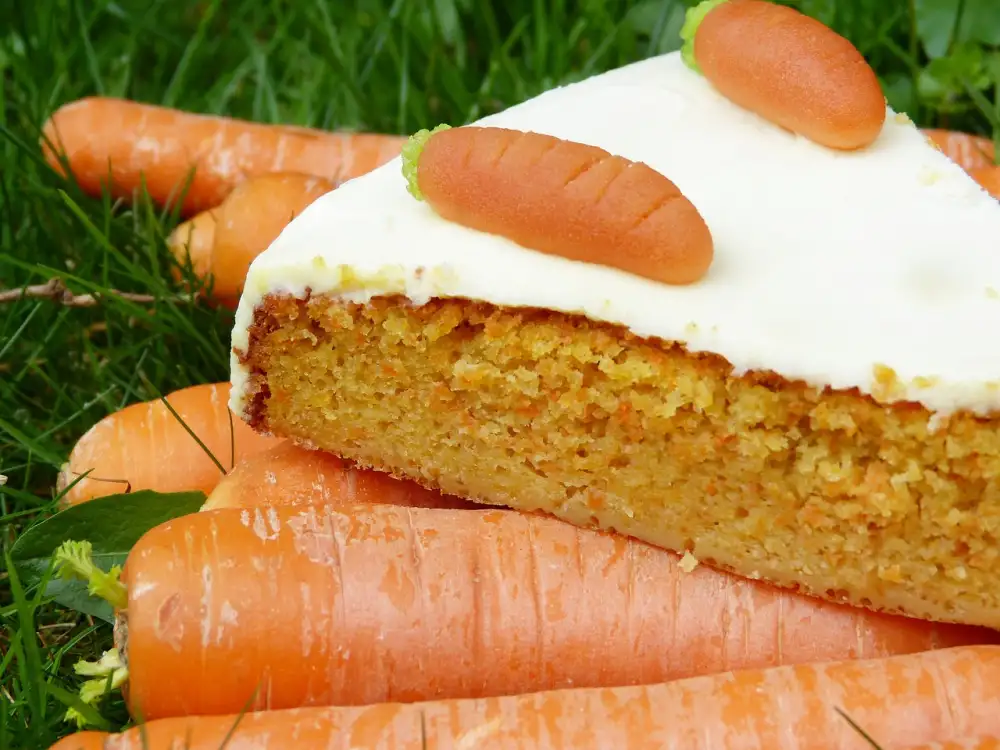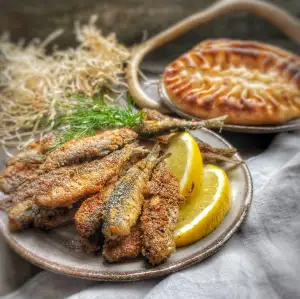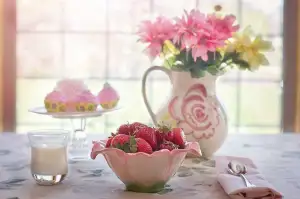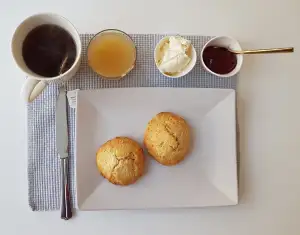Indulge in Delight: Master the Art of Gluten-Free Cake for Ultimate Culinary Excellence

Gluten-free cakes have gained immense popularity in recent years, catering to the needs of individuals with gluten sensitivities or those following a gluten-free diet. These delectable treats offer a delicious alternative to traditional cakes, without compromising on taste or texture. Whether you are a seasoned baker or just starting your culinary journey, mastering the art of gluten-free cake baking is an essential skill that will elevate your expertise in the kitchen. In this article, we will delve into the world of gluten-free cakes and guide you on how to create these delightful desserts with finesse and flair. Get ready to embark on a journey of indulgence and discover the secrets behind crafting gluten-free cakes that will leave everyone craving for more.
Understanding gluten and its effects on the body
Understanding Gluten and Its Effects on the Body
Gluten is a protein found in wheat, barley, and rye that gives elasticity to dough and helps it rise. However, for some individuals, consuming gluten can have adverse effects on their health.
Celiac disease is an autoimmune disorder where the body's immune system reacts negatively to gluten, damaging the small intestine and hindering nutrient absorption. This condition affects approximately 1% of the population.
Non-celiac gluten sensitivity is another condition where individuals experience symptoms similar to those with celiac disease but without the intestinal damage. Symptoms may include bloating, abdominal pain, fatigue, and headaches.
It's important to note that not everyone needs to avoid gluten. However, understanding its effects on the body allows us to cater to those who require gluten-free options while still indulging in delicious treats. By mastering the art of gluten-free baking, we can create cakes that are safe for consumption by individuals with gluten-related conditions without compromising on taste or texture.
Exploring the benefits of gluten-free baking
Exploring the Benefits of Gluten-Free Baking
Gluten-free baking has gained immense popularity in recent years, and for good reason. Not only is it a necessity for those with gluten sensitivities or celiac disease, but it also offers a range of benefits for everyone.
One of the primary advantages of gluten-free baking is improved digestion. Gluten, a protein found in wheat, barley, and rye, can be difficult for some individuals to digest properly. By eliminating gluten from your baked goods, you can alleviate digestive discomfort and promote better overall gut health.
Additionally, gluten-free baking opens up a world of creativity in the kitchen. With the wide variety of alternative flours available, such as almond flour, coconut flour, and rice flour, you can experiment with unique flavors and textures that are not possible with traditional wheat-based recipes.
Another benefit is that gluten-free cakes tend to be lighter and moister than their gluten counterparts. The absence of gluten allows for a more delicate crumb structure and a softer texture. This makes them incredibly enjoyable to eat and adds an element of indulgence to your baking creations.
Furthermore, embracing gluten-free baking means catering to a wider audience. By offering gluten-free options at gatherings or events, you ensure that everyone can enjoy your delicious creations without worrying about dietary restrictions or allergies.
Lastly, adopting gluten-free baking encourages mindful eating habits. It prompts us to explore alternative ingredients that are often more nutritious than refined wheat flour. From nutrient-rich almond flour to fiber-packed coconut flour, these alternatives provide added health benefits while still delivering on taste.
In conclusion, exploring the world of gluten-free baking brings numerous benefits beyond just catering to dietary needs. Improved digestion, enhanced creativity in the kitchen, lighter textures, inclusivity for all guests, and healthier ingredient choices are just some of the advantages awaiting those who embark on this culinary journey. So why not indulge in the joy of mastering the art of gluten-free cake for ultimate culinary excellence?
Essential ingredients for a gluten-free cake
When it comes to baking a gluten-free cake, using the right ingredients is crucial. Here are some essential ingredients that will help you achieve a delicious gluten-free cake:
1. Gluten-Free Flour: Replace regular wheat flour with gluten-free alternatives such as almond flour, rice flour, or a gluten-free all-purpose flour blend. These flours provide structure and texture to your cakes without the presence of gluten.
2. Xanthan Gum: This ingredient acts as a binder in gluten-free baking, helping to replace the elasticity that gluten provides. It is commonly used in small amounts to improve the texture and prevent crumbling in gluten-free cakes.
3. Baking Powder: Ensure that your baking powder is labeled as gluten-free, as some brands may contain traces of wheat starch. Baking powder helps your cake rise by creating air bubbles when combined with liquid and heat.
4. Eggs: Eggs play an important role in adding moisture and structure to your cake. They also help with leavening and binding, making them an essential ingredient in gluten-free baking.
5. Dairy-Free Milk: If you're following a dairy-free diet along with being gluten-free, opt for non-dairy milk like almond milk or coconut milk. These alternatives work well in recipes and provide moisture to the cake.
6. Sweeteners: Choose your sweeteners wisely to ensure they are free from any hidden sources of gluten. Options like granulated sugar, honey, maple syrup, or agave nectar can be used to sweeten your cake.
By using these essential ingredients, you can create a delicious and moist gluten-free cake that rivals its traditional counterparts while being safe for those with gluten sensitivities or allergies.
Tips for successful gluten-free baking
1. Use a blend of gluten-free flours: Experiment with different combinations of flours like rice flour, almond flour, and tapioca flour to achieve the best texture and flavor in your cake.
2. Add binders: Since gluten is responsible for holding the cake together, add binders like xanthan gum or psyllium husk powder to prevent your cake from crumbling.
3. Increase moisture: Gluten-free cakes tend to be drier than their traditional counterparts. Add extra moisture by using ingredients like applesauce, yogurt, or buttermilk in your recipe.
4. Don't overmix: Overmixing can lead to a dense and gummy texture in gluten-free cakes. Mix the batter just until all the ingredients are combined for a lighter result.
5. Let it rest: Allow the batter to rest for 10-15 minutes before baking. This helps the flours absorb moisture and results in a better texture.
6. Adjust baking time and temperature: Gluten-free cakes may require longer baking times at slightly lower temperatures compared to regular cakes. Keep an eye on your cake and use a toothpick to check for doneness.
7. Use parchment paper or non-stick pans: Gluten-free batters can be sticky, so lining your pans with parchment paper or using non-stick pans will make it easier to remove the cake without it sticking.
8. Cool completely before removing from the pan: Gluten-free cakes are delicate and can easily break when warm. Allow them to cool completely in the pan before transferring them onto a cooling rack.
By following these tips, you'll be well on your way to mastering the art of gluten-free baking and creating delicious cakes that everyone can enjoy!
Delicious gluten-free cake recipes to try
1. Classic Vanilla Gluten-Free Cake:
- Ingredients: gluten-free flour blend, baking powder, salt, unsalted butter, sugar, eggs, vanilla extract, milk.
- Instructions: Preheat oven to 350°F. In a bowl, whisk together flour blend, baking powder, and salt. In another bowl, cream butter and sugar until light and fluffy. Add eggs one at a time, beating well after each addition. Stir in vanilla extract. Gradually add dry ingredients alternating with milk. Pour batter into greased cake pans and bake for 25-30 minutes.
2. Decadent Chocolate Gluten-Free Cake:
- Ingredients: gluten-free all-purpose flour, cocoa powder, baking powder, salt, unsalted butter, sugar, eggs, vanilla extract, milk.
- Instructions: Preheat oven to 350°F. In a bowl, combine flour blend, cocoa powder, baking powder and salt. In another bowl beat butter and sugar until creamy. Add eggs one at a time followed by vanilla extract. Gradually add dry ingredients alternating with milk. Pour batter into greased cake pans and bake for 30-35 minutes.
3. Zesty Lemon Gluten-Free Cake:
- Ingredients: gluten-free flour blend with xanthan gum (if not included), baking powder,salt,butter,sugar,eggs,vanilla extract,milk,zest of 2 lemons.
- Instructions: Preheat oven to 350°F.In a bowl whisk together flour blend,baking powder,and salt.In another bowl cream butter and sugar until light.Add eggs one at a time followed by vanilla extract.Stir in lemon zest.Gradually add dry ingredients alternating with milk.Pour batter into greased cake pans.Bake for 25-30 minutes.
These recipes are just the beginning of your gluten-free cake journey! Experiment with different flavors like carrot or coconut and don't forget to add your own personal touch. Enjoy the process and savor the delicious results!
Decorating and serving gluten-free cakes
Decorating and serving gluten-free cakes can be just as enjoyable and creative as with traditional cakes. Here are some tips to ensure your gluten-free creations look and taste amazing.
When it comes to decorating, the options are endless. Use gluten-free frosting, which can be easily made by substituting regular flour with a gluten-free alternative like almond flour or rice flour. Experiment with different flavors such as chocolate, vanilla, or citrus to add a unique twist.
To make your cake visually appealing, consider using fresh fruits, edible flowers, or nuts for garnishing. These not only add a pop of color but also enhance the overall taste and texture of the cake.
If you want to take your decoration skills up a notch, try piping techniques using gluten-free icing. You can create beautiful designs like rosettes, swirls, or even intricate patterns. Just ensure that the icing you use is gluten-free and free from any cross-contamination risks.
When serving gluten-free cakes, it's important to inform your guests about its special dietary nature. Labeling the cake as "gluten-free" will help those with dietary restrictions feel at ease and avoid any potential health issues.
Remember that presentation is key. Serve your cake on a beautiful platter or cake stand to make it even more enticing. Consider adding a dusting of powdered sugar or drizzling some glaze over the top for an elegant finishing touch.
By paying attention to both the visual appeal and taste of your gluten-free cake, you can create a dessert that will impress everyone at the table. So go ahead and indulge in the art of decorating and serving gluten-free cakes with confidence!
In conclusion, mastering the art of gluten-free cake opens up a world of culinary possibilities and delights. By understanding the effects of gluten on the body and exploring the benefits of gluten-free baking, you can create delicious treats that are not only safe for those with gluten sensitivities but also enjoyed by everyone.
With essential ingredients like almond flour, tapioca starch, and xanthan gum, you can achieve a moist and fluffy texture in your gluten-free cakes. And with a few tips for successful baking, such as using room temperature ingredients and ensuring proper mixing techniques, you can overcome any challenges that may arise.
To truly indulge in the delight of gluten-free baking, try out some of our delicious recipes. From classic chocolate cake to zesty lemon pound cake, there is something for every taste bud. And don't forget to get creative with decorating and serving your gluten-free cakes – add fresh fruits, edible flowers, or a drizzle of homemade glaze to make them even more visually appealing.
So embrace the joy of gluten-free baking and let your creativity soar. With dedication and practice, you'll become a master in no time. Get ready to impress your friends and family with delectable gluten-free cakes that will leave them wanting more. Happy baking!
Published: 27. 11. 2023
Category: Food



